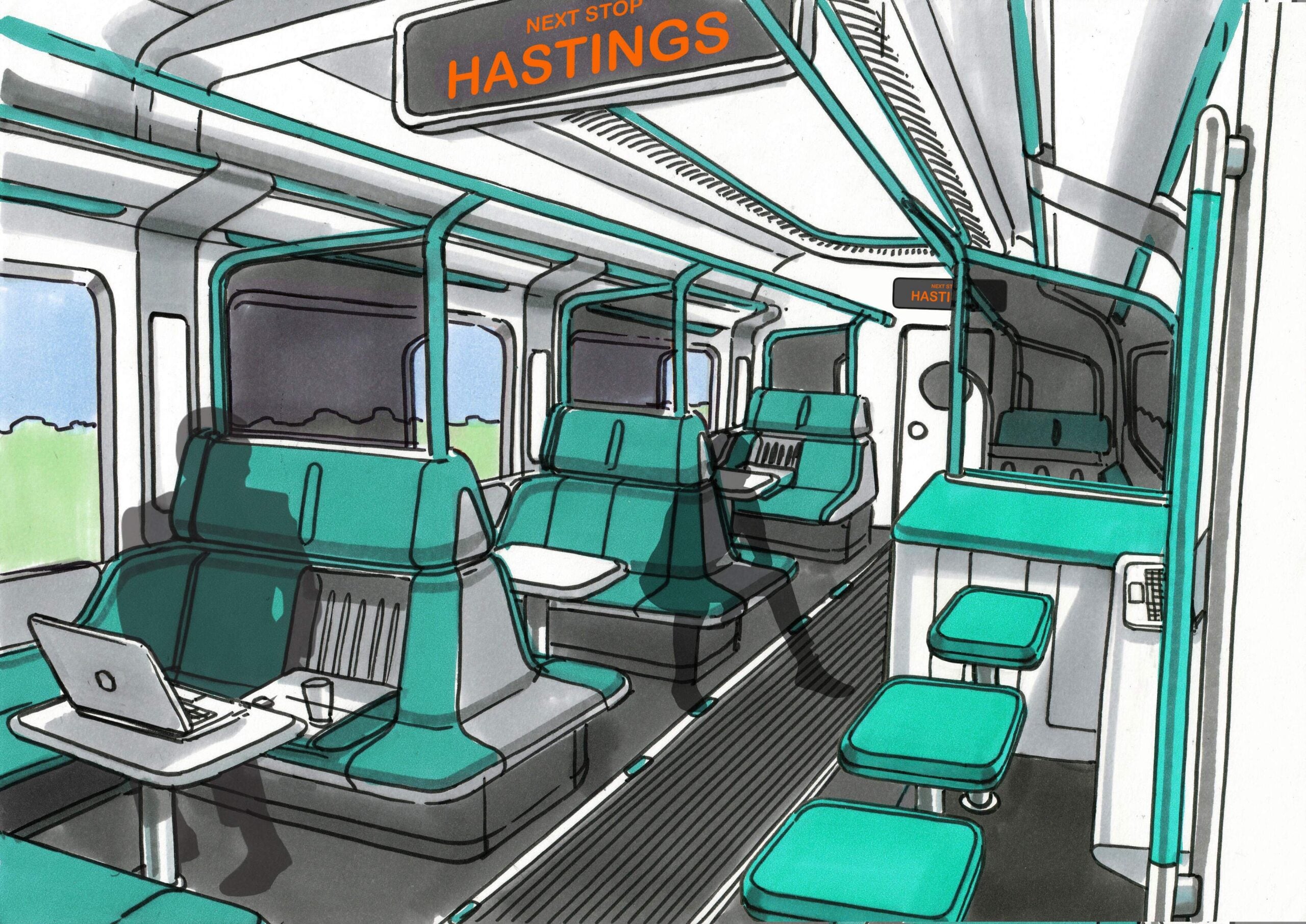Due to the impacts of the ongoing Covid-19 pandemic the railway industry’s routine has been disrupted. The industry had to adapt and overcome the challenges which presented themselves. From train crowding software, to the increased amount of contactless payment options, the industry has been striving towards a service that meets the needs of a pandemic rail customer.
Looking forward, however; the industry will need to adapt once more to cater to the needs of the post pandemic passenger, adopting solutions to provide better transport infrastructure.
Global strategic design and innovation company, Seymourpowell, have collaborated with Angel Trains, to develop a new train concept designed for the post pandemic customer to provoke discussion within the industry. Featuring sanitiser stations, contactless doors and antibacterial poles, the train concept aims to offer spaces for a variety of passengers which can be adapted accordingly.
Head of transport at Seymourpowell, Jeremy White, discusses what the new train interior has to offer as well as the benefits that it provides for passengers.
Frankie Youd (FY): Seymourpowell has collaborated to create a ‘post Covid’ rail interior, what does this involve?
Jeremy White (JW): The work was done to provoke debate about the way that train interiors should be designed in the future. It’s really to start the debate within the industry and try and get people back on rail post pandemic.
It all revolves around flexibility, flexible architecture that can do more than one thing and therefore offer more than one service for rail operators. On a morning commute – if the commuters come back in the way that they used to – then there’s that ability to have standees and to meet high-capacity demands.
Likewise, when there are fewer people travelling, then those spaces can be reconfigured and offer spaces for people to take their bicycles onboard, encourage leisure travellers to go onboard with leisure facilities, spaces for large luggage and those sorts of things.
There’s a focus on new ways of working and encouraging people to move at different times of the day. Where a space that would be normally designed for four people can shared by two people and they’ve all got more space to spread out and work in an effective way.
FY: When was this concept first discussed?
JW: We’ve been promoting ideas like this for rail interiors for several years. We’ve been working with Angel trains for five or six years, and together we have been promoting these ideas of flexibility.
It’s always been difficult to push those ideas through with rail operators because they are having to meet their franchise agreements which are often configured, or the franchise agreements themselves are constrained by the number of seats that an operator needs to run.
When you do that you end up with rail vehicles that are crammed full of seats, and that takes away opportunities to do anything else within that space.

FY: What are the key benefits of this new design compared to the current train designs?
JW: It’s about the flexible nature of what we’re trying to do with these ideas. It doesn’t just do one thing at one time, it can adapt and change to the different needs and for the different people that are using them.
It’s flexible in its architecture but also flexible with the business case – moving from a business that sells seats to one that sells spaces, or one that sells experiences, and you drive that through the product.
FY: Do you think a design such as this could be the future of train design?
JW: The next big issue of course is sustainability, reducing our carbon footprint, encouraging people out of their cars and onto public transport. It has never really been a better opportunity to reinvent the way that we move on in public transport.
The Covid-19 pandemic has been the sort of catalyst to promote a different way of moving around. If you think about pre Covid-19 times, people were talking about modal shifts and making people travel and spread the peak across a bigger period of time. Covid-19 has been the catalyst to make that happen.
Flexible working, hybrid working has materialised out of the back of this. That means that people aren’t expected to be at their office door at nine o’clock in the morning, they can work from home in the morning, come in at midday and therefore the trains have different needs, and the product needs to facilitate those needs.
FY: What do you think the future holds for the rail industry?
JW: I think there needs to be diversification in service offers and experience offers, and that potentially stretches beyond the trip on the train. You think about customer service propositions that extend for end-to-end journeys, travel, and tourism opportunities within rail operators. Rail operators might become travel operators in the future.
Being able to shift that business model from being about just selling a seat on a train to selling a broader spectrum of services that connect people as they move around.
Mobility companies is what you’d look to see them becoming, and of course their products need to lead that, they need to facilitate those different product offerings, services and experiences.




